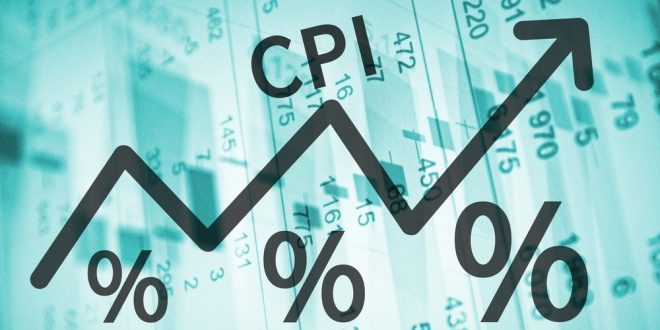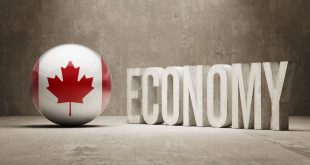The US Bureau of Labor Statistics will release July’s CPI data on Wednesday, August 10 at 12:30 GMT and as markets get closer to the release time, forecasts by the economists of nine major banks regarding the upcoming US inflation print expect inflation to ease down.
Economists expect inflation to decelerate from 9.1% to 8.7% YoY. Monthly, a modest increase of 0.2% is projected after a leap of 1.3% in June. What’s more, Core CPI is expected to have accelerated from 5.9% to 6.1% YoY, owing to a more modest increase of 0.5% in monthly underlying inflation, down from 0.7% recorded in June.
TDS
“Core prices likely stayed strong in July, with the series registering a 0.5% MoM gain. Shelter inflation likely maintained strong momentum, though we look for airfares to retreat for a second straight month. Importantly, gasoline prices likely brought notable relief for the headline series, declining a sharp 8% MoM. Our MoM forecasts imply 8.7%/6.1% YoY for total/core prices”.
NBF
“The food component likely remained very strong given severe supply constraints globally, but this increase should have been partially compensated by lower gasoline prices. As a result, headline prices could have increased 0.2% MoM, the least since January 2021. If we’re right, the year-on-year rate should come down to 8.7% from a 40-year high of 9.1%. Core prices, meanwhile, may have continued to be supported by rising rent prices and advanced 0.5%. This would translate into a one-tick increase of the 12-month rate to 6.0%”.
Commerzbank
“We expect consumer prices excluding energy and food (‘core rate’) to have risen by 0.6% month-on-month in July, only slightly less than in June (0.7%). On balance, we expect consumer prices to rise by 0.3% month-on-month, significantly less than in June (1.1%). The year-on-year rate would then fall from 9.1% to 8.8%. If the price of gasoline remains at the current level, the headline inflation rate is likely to remain at about this level for the next few months. After that, inflation is likely to fall but remain very high for a long time. After all, the core inflation rate has probably not yet reached its peak. It is likely to rise from 5.9% in June to 6.2% in July and reach 6.8% in September. A slight decline in headline inflation in July could fuel speculation that the Fed will raise rates by only 50 basis points at its next meeting in September, less than the last two decisions (75 bps each). However, we caution against underestimating medium and longer-term inflation risks because of the persistence of core inflation”.
RBC Economics
“US inflation numbers are expected to edge lower, dropping to 8.8% in July. There are reasons to believe that inflation will continue to slow. Global supply chain pressures have eased more sustainably since late spring, as shipping times and costs fall. Commodity prices, though very high, have also been trending lower. And with high inflation and rising borrowing costs squeezing consumers’ real buying power, there are already early signs of slowing domestic consumer demand. Still, a bigger pullback in consumer demand will likely be necessary to get inflation moving back toward the Federal Reserve’s 2% target rate. Overall, we look for the Fed to hike rates to 3.25%-3.5% range by end of this year”.
Citibank
“US July CPI MoM – Citi: 0.2%, prior: 1.3%; CPI YoY – Citi: 8.8%, prior: 9.1%; CPI ex Food, Energy MoM – Citi: 0.5%, prior: 0.7%; CPI ex Food, Energy YoY – Citi: 6.1%, prior: 5.9%. We expect a 0.52% MoM increase in core CPI in July, a softer increase than 0.7% in June but with still-strong underlying details, in particular shelter prices. Services prices may also pick up, largely reflecting months of consistently strong wage gains amidst a still-tight labor market. Meanwhile, the pullback in headline CPI from 9.1% YoY in June could suggest a ‘peak’ of inflation is reached”.
CIBC
“Consumers saw some relief from lower prices at the pump in the US in July, which will help total annual inflation decelerate to 8.8% YoY, along with base effects. Although global food price indices have softened lately as wheat harvests in the northern hemisphere have begun, that will take some months to feed through to consumer prices. Another strong increase in categories outside of energy and food likely resulted in an acceleration in core inflation to 6.2% YoY, magnified by base effects. Indeed, higher rents are still feeding through to the CPI’s shelter index. We are slightly above the consensus which could lift bond yields and the USD”.
ING
“The headline rate of CPI may rise just 0.2% month-on-month, which would be the smallest monthly increase since January 2021 and result in the annual rate of inflation slowing to 8.7% from 9.1%. However, the core rate is still expected to post a 0.4% MoM gain with housing costs continuing to boost the index. This would mean the ex-food and energy annual rate of inflation rises to 6% from 5.9%, reinforcing the message that it is still a long battle to get inflation back to the 2% target”.
ANZ
“We expect US core CPI to rise by 0.5% MoM in July and headline to rise by 0.1%, as sharply lower energy and food prices drag headline below core. Our supply-side dashboard suggests cost pressures and bottlenecks continued to ease in July. This development along with weaker commodity prices and a stronger USD should see core goods inflation ease relative to June. Wages as measured by the Employment Cost Index are running at record pace and are well above a level consistent with 2% inflation. As wages comprise a significant chunk of the cost of service-based industries, core services inflation is expected to continue to be elevated. We expect Fed officials to pay close attention to core inflation. A continuation of recent trends would be unwelcomed and likely tilt the Fed toward another substantive rate increase at the 20‑21 September FOMC meeting”.
Deutsche Bank
“We expect the headline YoY rate to finally dip after energy prices have fallen of late. We are looking for 8.8% (from 9.1%) with consensus a tenth lower. Core however is expected to increase two-tenths to 6.1% YoY. If we see such an outcome it’ll be interesting if the market cheers what could be the start of a decline from the peak in the headline rate or remains concerned that core continues to edge up. Core should be more important to the Fed but the market has been known to take the dovish interpretation to events of late, payrolls notwithstanding”.

 Noor Trends News, Technical Analysis, Educational Tools and Recommendations
Noor Trends News, Technical Analysis, Educational Tools and Recommendations




